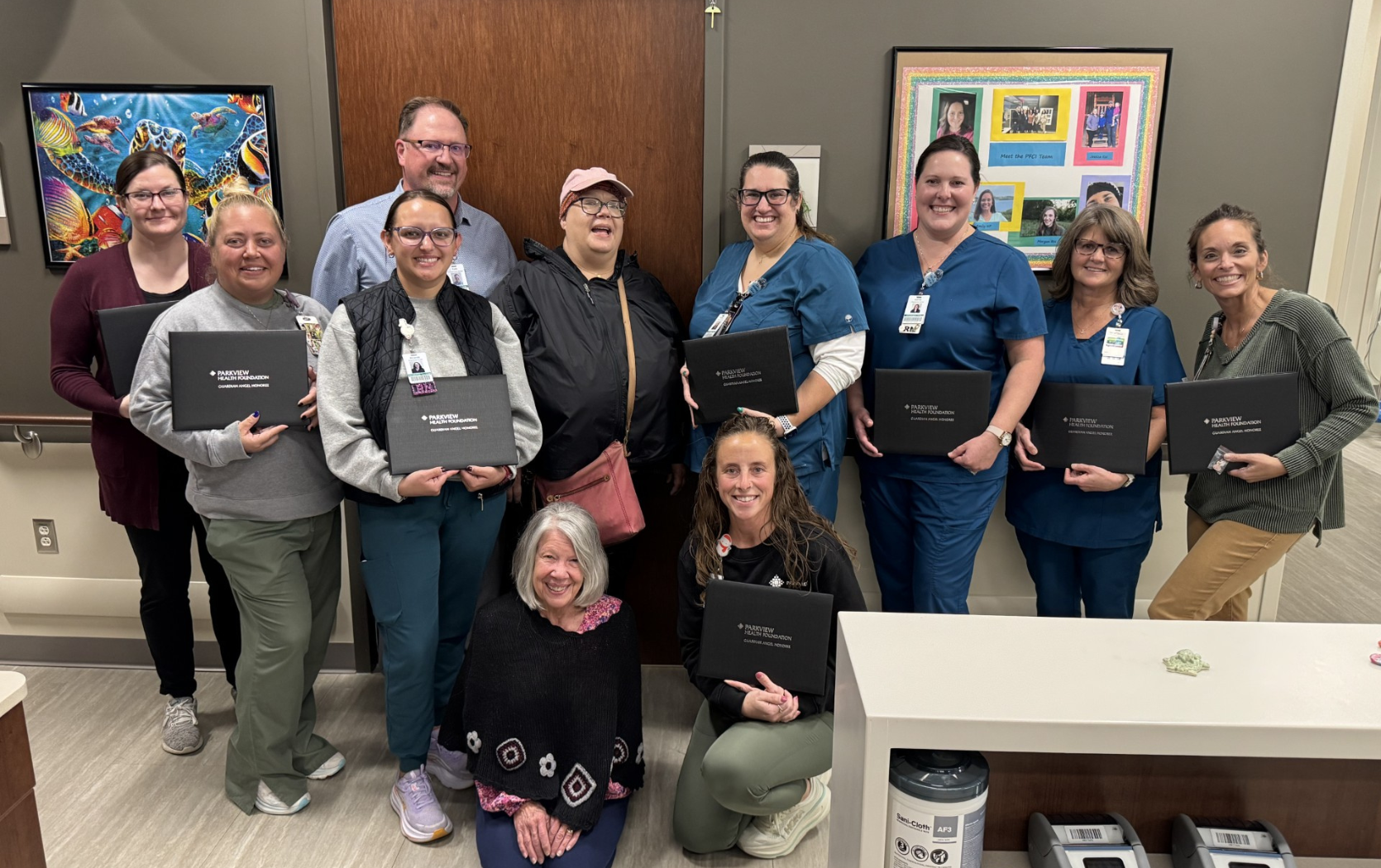
The Parkview Movement Disorders Clinic – located in the Center for Aging and Health at Parkview Hospital Randallia – helps individuals who have been diagnosed with Parkinson’s disease (PD), dystonia, essential tremor (ET) and other conditions affecting their mobility and daily functioning. The program helps improve their levels of overall health and independence through collaborative care management, easy access to specialty care and comprehensive services.
For some patients diagnosed with a movement disorder, treatment through medication prescribed by a neurologist can effectively manage symptoms. But for others, it’s more complicated. We invited William Young, MD, PPG – Neurosurgery, to share more about this unique, multidisciplinary approach to care.
The movement disorders + symptoms
Essential tremors.
Essential tremors (ET) are more common than Parkinson’s disease, at a rate of 10:1, but essential tremors don’t get as much press. Occurrence is 50 percent familial, which can be problematic. If you have a first-degree relative with ET, it’s something to watch for.
ET can be very debilitating. Those experiencing ET tend to withdraw from society, often self-medicating with substances such as alcohol. ET patients have action tremors, meaning their tremors are aggravated by movement. ET is associated with constipation and depression. Beta blockers are a common treatment.
Parkinson’s disease.
With Parkinson’s disease, the patient is experiencing a loss of dopamine-producing cells. Parkinson’s patients experience resting tremors. Deep brain stimulation (DBS), a common surgical treatment, is putting the bad cells to sleep.
Interestingly, with Parkinson’s, one of the first signs is a loss of smell. In the early stages, patients may notice a tremor of the hand, known as a “pill-rolling tremor” and it progresses to a rigidity of the limbs, stiffness, difficulty walking, excessive sweating, feeling full, depression, fatigue and constipation. Patients often describe a feeling of walking in heavy boots (Bradykinesia). As stages progress, it can be difficult even getting out of bed in the morning. With medication, these symptoms can come and go. That’s why timing and dosage are so important.
Dystonia.
Dystonia is characterized by persistent or intermittent contractions of the muscles and repetitive postures or movement, made worse by movement.
The history of care
The treatment of movement disorders, both surgically and medically, has been around for many years, particularly for Parkinson’s disease. The surgical procedures have evolved over the years, eventually arriving at the current practice, deep brain stimulation (DBS). The advantage of this approach is that it’s reversible, almost like a pacemaker for the brain. When I took over DBS procedures at Parkview in 2011, I realized that the best way to help these patients was through a team approach. We visited other centers, did a good deal of research and landed on a clinic approach.
Multidisciplinary approach
One of the advantages of the multidisciplinary approach is having several sets of eyes on a patient. It could be a movement disorder or it could be something else, and having multiple opinions can help with the diagnosis. For example, during the assessment our pharmacist is looking at the individual’s list of medications because sometimes a prescription can interact and cause unsteadiness. Also, if a patient is not deemed a strong surgical candidate, which can be the case for many different reasons, we can provide alternative treatments.
Our team includes a neurologist, physical therapist, neurosurgeon, neuropsychologist, integrative medicine physician, occupational therapist, pharmacist and a program coordinator, and everyone has equal say in the patient’s care plan.
Each patient is videotaped and we have monthly meetings where we go over the cases and determine the best care plans. We look at other factors, including other conditions effecting the patients, the presence of depression or dementia, and take it all into consideration. We also work with caregivers to make patient appointments as convenient as possible and to offer a one-stop experience, whenever possible.
Alternative treatment
With regard to Parkinson’s disease, we find that exercise and remaining active is very important. Activity such as noncontact boxing can make a huge difference and delay certain symptoms.
Medication management and adjustment also plays an integral role in managing movement disorders. We pay close attention to the patient’s symptoms, progress and reactions in relation to their prescriptions and make adjustments accordingly.
A physician referral is needed for patients to be assessed at the Parkview Movement Disorders Clinic. Upon referral, patients will be contacted to schedule their appointments within a week.



